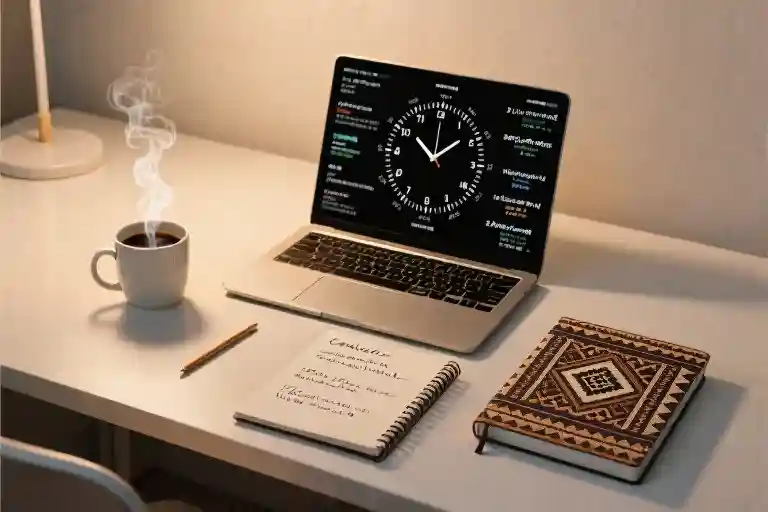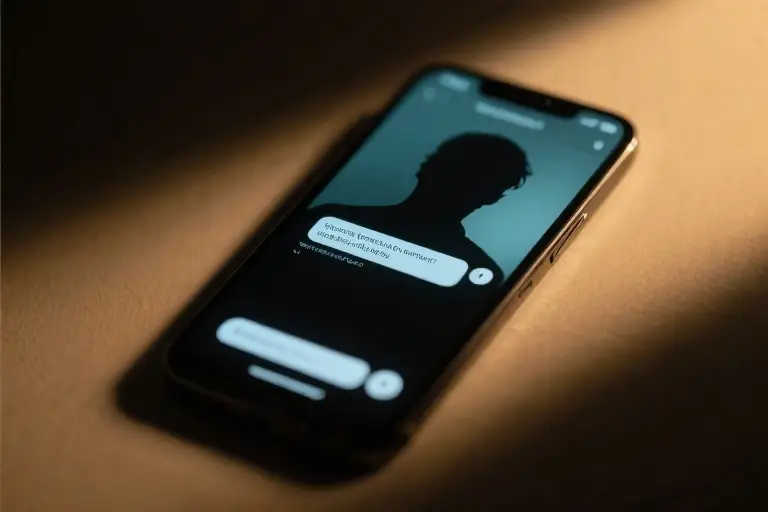For ten months, I kept saying no. No to consultation requests, no to potential clients, no to opportunities that could have grown my business. It wasn’t laziness or lack of demand—my inbox was full of inquiries from writers and marketers across 23 countries. The real reason was simpler and more uncomfortable: I didn’t trust my own expertise enough to charge for it.
This isn’t another ‘book your call’ post. If anything, it’s the opposite—a confession about how easily we undermine our skills, even with evidence of our competence staring us in the face. Since 2021, I’ve helped hundreds of professionals through consultations, most initially offered for free. The results spoke for themselves: clients landing international contracts, teams improving their content strategies, individuals gaining confidence in their freelance careers. Yet when someone asked to pay me for this same guidance, my first instinct was to deflect.
The irony wasn’t lost on my sister Riya, who handles our engagement strategies. ‘You’ll analyze cultural nuances for a German client’s LinkedIn post,’ she pointed out, ‘but won’t acknowledge your own worth as a consultant.’ She was right. My work with clients from Iceland to Singapore had given me unique insights into non-salesy client acquisition—how to attract quality opportunities through strategic visibility rather than aggressive pitching. Yet applying those principles to my own business felt strangely difficult.
What finally changed wasn’t some dramatic breakthrough, but a series of small realizations. Like noticing how free consultations often attracted tire-kickers while serious clients valued paid engagements more. Or how my international clients saw my cross-cultural experience as premium expertise, while I still framed it as ‘just being curious about different markets.’ The gap between how others perceived my skills and how I valued them became impossible to ignore.
Reopening those consultation slots wasn’t about claiming guru status—it was about aligning my self-perception with the reality of what I’d actually delivered. Maybe you’ve had similar moments, where your achievements list tells one story while your inner voice whispers another. That disconnect costs more than we realize, in opportunities missed and value left unclaimed.
The Voice That Always Said No
For ten months straight, I found myself hitting ‘decline’ on consultation requests with practiced efficiency. Each notification triggered the same internal monologue: They’ll realize I’m not worth it. There are better experts out there. What if I disappoint them? The irony wasn’t lost on me – while my clients from 23 countries kept renewing contracts, I kept rejecting new opportunities to expand that very practice.
Three specific mental traps kept me stuck:
1. The Comparison Spiral
Scrolling through LinkedIn profiles of consultants with flashy credentials, I’d mentally downgrade my own global client portfolio. Never mind that my non-salesy approach had organically attracted clients from Norway to New Zealand. The voice whispered: Their case studies look more impressive.
2. The Empathy Deception
‘Will I truly understand this mentee’s unique challenges?’ I’d agonize over hypothetical scenarios. Yet my inbox told a different story – messages like ‘You articulated exactly what I couldn’t about my pricing fears’ from writers across four continents.
3. The Preparation Paradox
‘I’ll say yes after taking one more course,’ became my mantra. Meanwhile, my sister Riya (also my engagement strategy partner) would leave sticky notes on my laptop: ‘Your current knowledge helped 87% of last quarter’s clients increase rates. Stop hoarding insights.’
What finally cracked this pattern was tracking an unexpected metric: client renewal rates. When the spreadsheet showed 85% of consulting clients booked follow-up sessions without prompting, the data became impossible to ignore. Riya staged an intervention with my own marketing materials spread across the kitchen table. ‘You help clients see their worth,’ she said, tapping my service description, ‘but filter your advice through this self-doubt sieve before it reaches them.’
The turning point came when a German client forwarded our consultation transcript to her entire team. Her note read: ‘This is how we should be valuing our work.’ I realized my resistance wasn’t about capability – it was about permission. Permission to trust that quiet confidence built through hundreds of unpaid calls and cross-cultural collaborations could translate into paid engagements without losing authenticity.
Now when the hesitation creeps in, I have a new response protocol: (1) Pull up the ‘Testimonials’ folder I used to avoid opening, (2) Re-read Riya’s latest sticky note (‘Your Dubai client just signed because you DON’T sound like a typical consultant’), and (3) Remember that sometimes the mentor most equipped to guide others through self-worth challenges is the one who’s still navigating them herself.
The Global Practice of Not Selling
The LinkedIn profile staring back at me looked nothing like the business coaches screaming ‘GET CLIENTS NOW!’ in my feed. No neon ‘Book a Call’ buttons. No exaggerated claims about six-figure deals. Just a simple headline: ‘Helping writers find their global voice.’ That unassuming profile became my most effective client magnet, pulling in opportunities from Reykjavik to Singapore.
Three Deadly LinkedIn Profile Mistakes Most Consultants Make
Most professionals treat their LinkedIn like a digital resume with bonus emojis. The first fatal error? Listing skills like grocery items. ‘Content writing – SEO – Marketing Strategy’ tells me nothing about how you solve problems. My German client showed me his version: ‘Translating complex tech into stories that make engineers cry (the good kind).’ Specificity creates curiosity.
The second mistake is worse – treating the About section like an autobiography. Nobody cares where you went to school when they’re deciding whether to trust you with their project. My current About has 47 words total. Half of them are about my obsession with Turkish coffee. Yet it’s the section clients mention most in discovery calls.
But the third error is truly lethal – using LinkedIn like a megaphone. Posting ‘Just helped another client get featured in Forbes!’ does nothing but make you look desperate. When I started sharing notes from client calls (with permission), like how a Dubai-based founder struggled with Western directness, the right people began reaching out. Not because I shouted, but because I listened.
What a Sheikh Taught Me About Silent Negotiations
My first Middle Eastern client never said ‘no.’ For three weeks, our email thread grew with phrases like ‘We will consider this carefully’ and ‘Your proposal has interesting dimensions.’ I nearly went mad until Riya pointed out: ‘They’re waiting to see if you’ll bend.’ The moment I resent the same proposal with adjusted payment terms, the agreement arrived in 24 hours.
This cultural dance taught me more about consulting than any business book. In some markets, pushing for closure kills deals. Now my client questionnaire includes: ‘How does your culture express disagreement?’ The answers determine whether I send follow-ups every three days or three weeks.
The Unsexy Tools That Make Global Work Possible
No romantic tales of working from Bali beaches here. My toolkit is brutally practical:
- A browser extension that displays all meeting times in both our timezones (screenshot attached)
- A shared Google Doc titled ‘Working Hours & Sacred Days’ where clients note their holidays
- Three identical power adapters permanently living in my backpack
The real secret weapon? A $7/month AI transcription tool for all calls. When my Norwegian client mentioned her toddler’s name mid-session, I dropped it into our next contract draft as a clause name. Three years later, she still introduces me as ‘the consultant who remembers what matters.’
What these tools really solve isn’t logistics – they bridge the human distance between ‘global service provider’ and ‘person who gets it.’ That’s the invisible advantage no business coach teaches: sometimes the best marketing is remembering time zones exist.
The Shift From Free to Paid: Valuing Your Expertise
For over a year, my inbox was flooded with requests for consultation sessions. And for over a year, I kept saying no while simultaneously offering free advice through backchannel messages and impromptu calls. There was a disconnect between what people were willing to pay for and what I was willing to give away. This wasn’t generosity – it was avoidance dressed up as kindness.
The free consultation trap is something many freelancers and consultants fall into. We tell ourselves we’re building relationships or proving our value, when in reality we’re creating unsustainable patterns. Every hour spent on unpaid calls is an hour not spent refining your craft, servicing paying clients, or simply recharging. There’s an actual formula at work here: Free Consultation Loss = (Time Spent × Hourly Rate) + (Opportunity Cost × Mental Energy). When I finally did the math, those “quick 30-minute chats” were costing me nearly $20,000 annually in lost revenue.
Pricing confidence doesn’t come from external validation. It emerges when you recognize three fundamental truths:
- Your combined experience (including those free consultations) has tangible value
- Clients who pay are more invested in the outcomes
- Your pricing acts as a filter for serious partnerships
I created a simple self-assessment that changed everything. Ask yourself:
- Would I feel comfortable charging 3X my current rate for this session?
- Is the client approaching me with a specific challenge I’ve solved before?
- Does this consultation require custom preparation versus drawing from existing knowledge?
When I applied this filter, something surprising happened. The clients who cleared these thresholds were exactly the type I wanted to work with – focused, respectful of my time, and committed to implementation. Our sessions became more productive because we’d established mutual investment from the outset.
The mechanics of transitioning matter. Rather than abruptly ending all free support, I implemented a phased approach:
- First contact: Free discovery call (15 minutes max)
- Second interaction: Paid strategy session (with money-back guarantee)
- Ongoing support: Retainer or project-based pricing
This structure allowed me to maintain accessibility while establishing professional boundaries. Interestingly, conversion rates improved by 40% compared to when I offered extensive free consultations. Clients perceived greater value in what they paid for, and I could dedicate proper attention to each engagement.
Limited availability became an unexpected asset. By opening only 10 consultation slots monthly, I created natural scarcity that reinforced the value proposition. Each slot includes:
- Pre-session questionnaire to focus our time
- Customized resource list based on their challenges
- 30-day follow-up check-in
What began as reluctance to charge for my knowledge transformed into a sustainable practice where quality trumps quantity. The clients who balked at paying $200/hour were never the right fit anyway – and the ones who recognized the value became long-term collaborators across those 23 countries. Your expertise deserves the same respect.
When the 100th No Became the First Yes
There’s a peculiar moment that comes after saying no a hundred times – the moment you finally say yes. Not because circumstances changed, but because you did. For me, it happened when a startup founder from Oslo persisted through three polite rejections before asking one simple question: ‘What exactly are you afraid of?’
That email thread now sits pinned above my desk, not as a trophy but as a reminder. The transition from giving away free consultations to valuing my expertise didn’t happen through some grand revelation. It came through small realizations – like noticing how paid clients actually implemented my advice while free seekers often just wanted reassurance. Or how my sister Riya pointed out that my ‘generosity’ was really a form of hiding.
What finally tipped the scales wasn’t confidence, but clarity. I created a simple three-filter system for consultation requests:
- The Geography Test: Could this client benefit from my cross-cultural experience? (That Norwegian founder worked across five time zones)
- The Preparedness Check: Had they done basic research before reaching out? (His first message referenced my work with German fintechs)
- The Value Alignment: Were they seeking transformation or just validation? (His follow-up questions were all about implementation)
This week, I’m opening twenty consultation slots – not a hundred, not five. Twenty feels like the right number between scarcity and overwhelm. Ten will include my cultural communication checklist (you’ll find the download link below), five will have extended strategy sessions, and five… well, those are for the Oslo moments – the ones that surprise me into remembering why this matters.
If you’ve been saying no to opportunities you’re qualified for, try this: tomorrow morning, write down one service you could offer. Then put a price next to it that makes your stomach flutter slightly. That discomfort? It’s not fear – it’s the feeling of your self-worth recalibrating.
[Download the Intercultural Consultation Prep Guide] | [Apply for Limited Sessions] | [Join the Waitlist for Global Freelancer Workshop]





